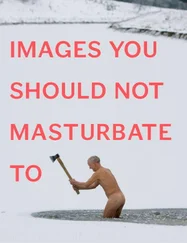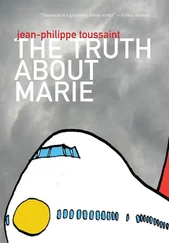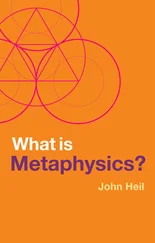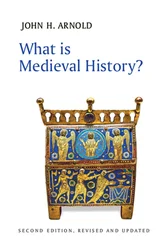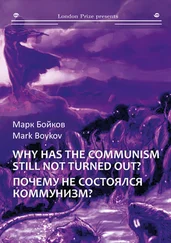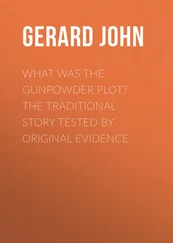So what do we learn from this that we didn’t learn from The Great Gatsby ?
Material progress will continue to spread. Knowledge is cumulative. At times in our past, knowledge has diminished. The classic case is Tasmania, or—on a grander scale—the Middle Ages. But since Gutenberg it is difficult to imagine that humanity will ever again shed information. Through the accumulation of knowledge and global trade, the goods and services that my lawyer friend enjoys today soon will be available to the poorest farmer in Zimbabwe. But no matter how much knowledge we accumulate, no matter how cheap computation, communication, and information storage become, no matter how seamlessly trade flows, that farmer will never get any closer to a date with the Pope.
See the Pope allegorically as all the goods and services that are immune to technological creation and reproduction. You can vacation on only one St. Barts. Rauschenberg created just a few originals. Only so many mansions dot the lakeshore in Zurich. Bringing technology to bear won’t help create any more. A date with a virtual Pope will never do the trick.
As mammals, we are status seekers. Non–status-seeking animals don’t attract suitable mating partners, and they eventually exit the gene pool. Thus goods conveying high status remain extremely important, yet are out of reach for most of us. Nothing technology brings about will change that. Yes, one day we might reengineer our cognition to reduce or eliminate status competition. But until then, most people will have to live with the frustrations of technology’s broken promise: That is, goods and services will be available to everybody at virtually no cost, but at the same time status-conveying goods will inch even further out of reach. That’s a paradox of material progress.
Yes, luxury used to define things that made life easier: clean water, central heating, fridges, cars, TVs, smartphones. Today luxury tends to make your life harder. Displaying and safeguarding a Rauschenberg, learning to play polo and maintaining an adequate stable of horses, or obtaining access to the Pope are arduous undertakings. That doesn’t matter; their very unattainability, the fact that these things are almost impossible for most people, is what matters.
As global wealth increases, nonreproducible goods will appreciate exponentially. Too much status-seeking wealth and talent is eyeing too few status-delivering goods. The price of nonreproducible goods is even more dependent on the inequality of wealth than on the absolute level of wealth in a society—further contributing to this squeeze.
The promise of technological progress can by definition not be kept. I think we should worry about the consequences, including a conceivable backlash to the current economic ecosystem of technology, capitalism, and free trade.
CLOSE OBSERVATION AND DESCRIPTION
URSULA MARTIN
Professor of computer science, Queen Mary, University of London
Take a potato from a bag of potatoes. Look at it closely. Yes, that’s right, you really have to do this exercise. Now put it back with the other potatoes, mix them up, and see if you can find it again. Easy? Now try this with oranges. Still easy? Now recruit a friend, and describe, draw, or even photograph the potato in enough detail for them to pick it out. Or the orange.
There is a weed with a pink flower growing in my flower border, and something very similar, with a yellow flower, growing in the wall. These are fumitory ( Fumaria officinalis ) and corydalis ( Pseudofumaria lutea ), wildflowers of the poppy family, and yes, the field guide tells me that the former is commonly found in cultivated ground and the latter in limestone walls. To identify exactly which of the twelve or so U.K. fumitories I am holding in my hand requires me to consider the precise descriptive language of botany and count and measure inflorescences, peduncules, and sepals. The field guide helpfully provides hand-drawn colored illustrations, black-and-white diagrams of flower parts, and a backwards look-up key (“If the inflorescence is shorter than the peduncle and… then it is a…”) to supplement the textual descriptions.
Once upon a time, such observation, description, and illustration were the bread and butter of professional and amateur scientists. My eight-volume flora, on heavy paper with lovely illustrations that are now collector’s items, was well thumbed by the original owner, a 19th-century lady of leisure. It claims to be written for the “unscientific,” but the content differs from a modern flora only by the inclusion of quantities of folklore, anecdotes, and literary references.
Darwin’s books and letters are full of careful descriptions. The amateur struggling with a field guide may take comfort in reading how he frets over the difference between a stem with two leaves and a leaf with two leaflets. Darwin seems to have had a soft spot for fumitories, giving wonderfully detailed descriptions of the different varieties, whether and under what conditions they attracted insects and how the geometry and flexibility of the different parts of the flower affected how pollen was carried off by visiting bees. He was looking for mechanisms that ensured evolutionary variability by making it likely that bees would occasionally transfer pollen from one flower to another, giving rise to occasional crosses—analysis later reflected in the Origin of Species .
Shakespeare and his audiences not only knew their weeds, they knew their habitats, too, and the difference between arable land and permanent pasture. In Henry V , we hear how wartime neglect has changed the countryside so that arable land left fallow has been taken over by darnel, hemlock, and fumitory, and in the unmown meadows, “hateful docks, rough thistles, kecksies, burs” have replaced cowslip, burnet, and clover. Gardeners everywhere will sympathize.
Google can give a happy hour or so tracking down references to fumitory: Online data sources allow the capture and analysis of images, sightings, and geographic and other data in a way never before possible, informing the creation and testing of broader scientific hypotheses. But the analysis is only as good as the input provided—citizen science projects founder if the citizens are unable to do more than record a “pink flower” and a blurred mobile-phone image. No amount of image analysis or data mining can yet take the place of the attention and precision practiced by Darwin and thousands of other professional and amateur naturalists and ecologists.
So let’s hear it for observation and description. Fumitory and corydalis may be for the advanced class. Start with the potato.
BRUCE HOOD
Director, Bristol Cognitive Development Centre, University of Bristol; author, The Self Illusion: How the Social Brain Creates Identity
As someone fairly committed to the death of our solar system and ultimately the entropy of the universe, I think the question of what we should worry about is irrelevant in the end. In any case, natural selection eventually corrects for perturbations that threaten the stability of environments. Nature will find a way, and ultimately all things will cease to be. So I could be glib and simply say, “Don’t worry, be happy.” Of course we are not wired that way, and being happy requires not worrying. My concern then, rather than worry, is how we go about science, and in particular the obsession with impact .
Up until the last century, science was largely the prerogative of the independently wealthy, who had the resources and time to pursue their passions for discovery. Later, large commercial companies would invest in research and development to gain the edge over competitors by innovating. The introduction of government funding for science in the early part of the 20th century was spurred by wars, economic depression, and disease. This not only broadened the scope of research by enabling much larger projects that were not motivated simply by profit but also created a new professional: the government-funded scientist.
Читать дальше

